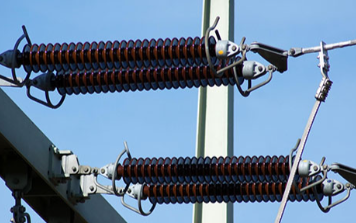Polyurethane sealants, due to their unique molecular structure and formula design, exhibit excellent performance in low-temperature environments:
1. Extremely Low Glass Transition Temperature
Typical range:-50°C to -70°C (common formula), special formulas (such as containing polycarbonate-polyether block copolymers) can be lower.
Core advantage:Maintains flexibility under extremely cold conditions, avoiding seal failure due to brittleness.
2. Retention of Low-Temperature Elasticity
Compression cold resistance coefficient:At -45°C, it can reach 0.2 to 0.5 (the closer the value is to 1, the better the low-temperature elasticity).
Practical significance:
In cold regions (such as Arctic projects, high-altitude cold areas), it can still adapt to structural deformations (such as thermal expansion and contraction, mechanical vibrations).
汽车领域:车窗密封条在冬季低温下不开裂,防止漏水漏风。
3. Low-Temperature Mechanical Property Changes
Hardness and strength:For every 10°C decrease in temperature, hardness can increase by about 5% to 10%, tensile strength increases but elongation rate decreases.
Performance balance:
Although flexibility decreases, through formula optimization (such as adding plasticizers or flexible chain segments), sufficient elastic deformation capability can still be maintained (elongation rate usually remains above 100%).
Comparison Disadvantage:Epoxy adhesives become brittle below -30°C and cannot adapt to low-temperature deformations.
4. Low-Temperature Application Scenarios
Automobile Manufacturing:
Window and sunroof sealing: Maintain sealing at -40°C (such as in Northern Europe, Canada in winter).
Battery pack sealing: Waterproof and dustproof for new energy vehicle batteries under low-temperature conditions.
Construction Engineering:
Cold-resistant sealing for building joints in cold regions (such as expansion joints at airports, high-speed rail stations).
Sealing of wall panel joints in cold chain logistics cold storage to avoid cold bridge effects.
Special Fields:
Sealing of polar research equipment and low-temperature components of spacecraft.
Wind turbine blade bonding: Long-term stability in marine low-temperature and high-humidity environments.
5. Precautions for Use
Construction Temperature:It is recommended to work above 5°C, and the curing time needs to be extended at low temperatures (e.g., curing time may double at -10°C).
Compatibility Testing: At extremely low temperatures, it is necessary to verify whether the adhesion strength with the substrate (such as metal, plastic) meets the standards.
Environmental Protection Requirements: Some polyurethane adhesives containing solvents evaporate slowly at low temperatures, so it is necessary to choose solvent-free or low VOC models.
In the automotive field: Car window seals do not crack in low winter temperatures, preventing water leakage and wind penetration.
6. Comparison of Low-Temperature Performance with Other Sealants
性能 | 聚氨酯密封胶 | 硅酮密封胶 | 丙烯酸密封胶 |
脆性温度 | -50℃~-70℃ | -40℃~-60℃ | -20℃~-30℃ |
低温弹性保持 | 优(耐压缩形变) | 优(高伸长率) | 差(易硬化) |
耐油/耐化学性 | 优 | 差 | 中 |
典型应用场景 | 汽车、冷链、极地工程 | 建筑幕墙、电子封装 | 室内装修、低负荷密封 |
Summary
Polyurethane sealants achieve a balance between hardness and elasticity at low temperatures through molecular chain segment design (such as the introduction of flexible segments) and filler optimization, making them the preferred material for high-reliability sealing in cold environments. Their performance advantages are particularly prominent in automotive, construction, and extreme environment projects, but appropriate formulations must be selected based on specific conditions and construction standards must be strictly followed.






